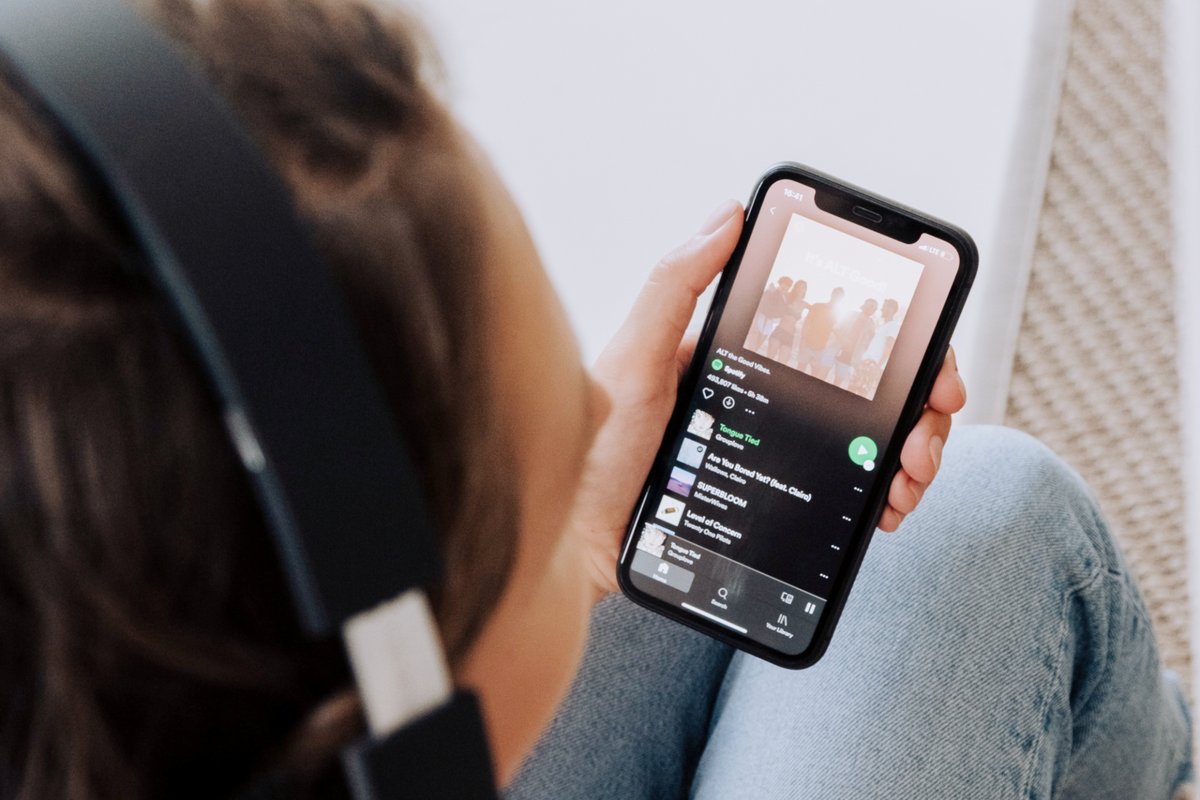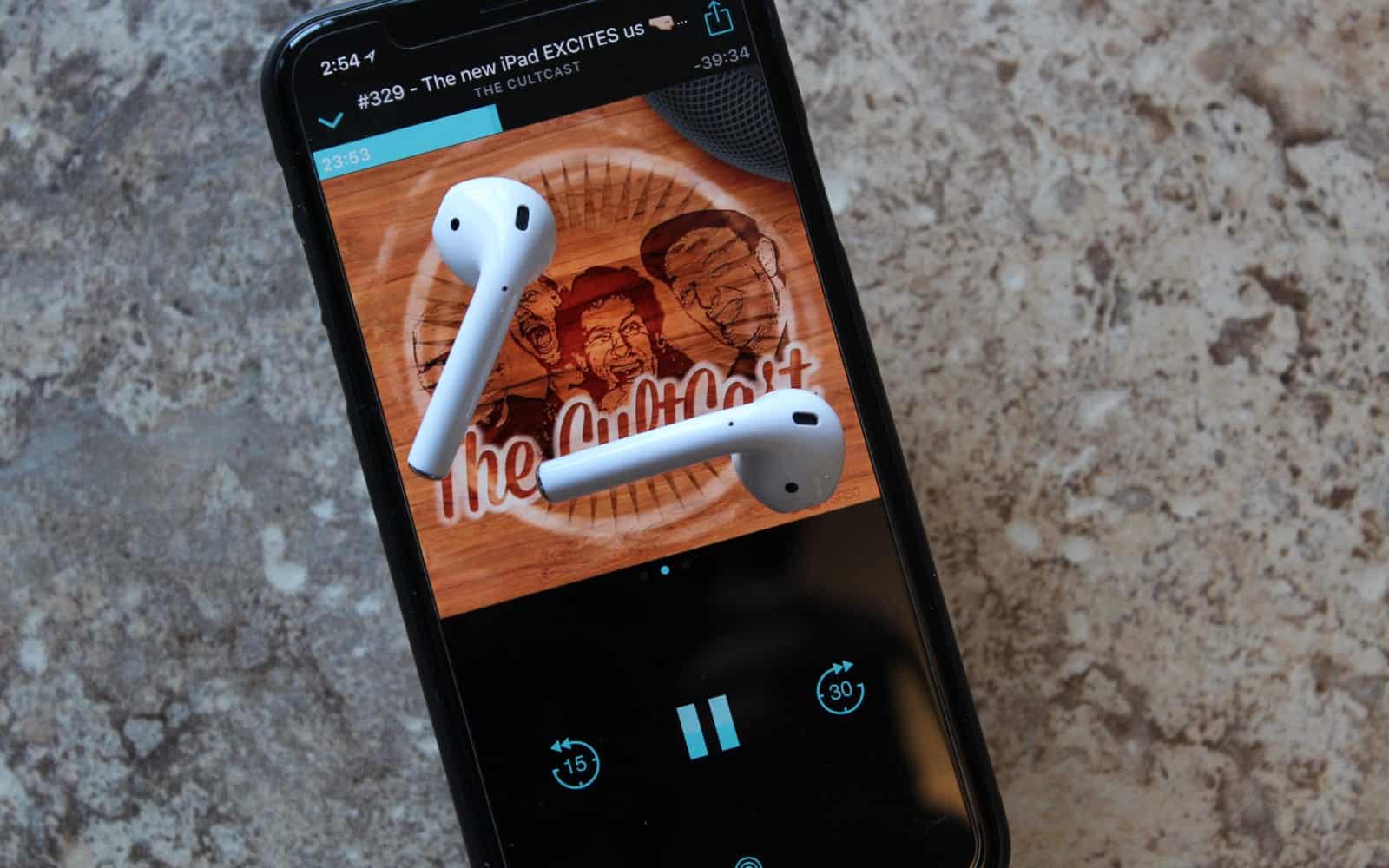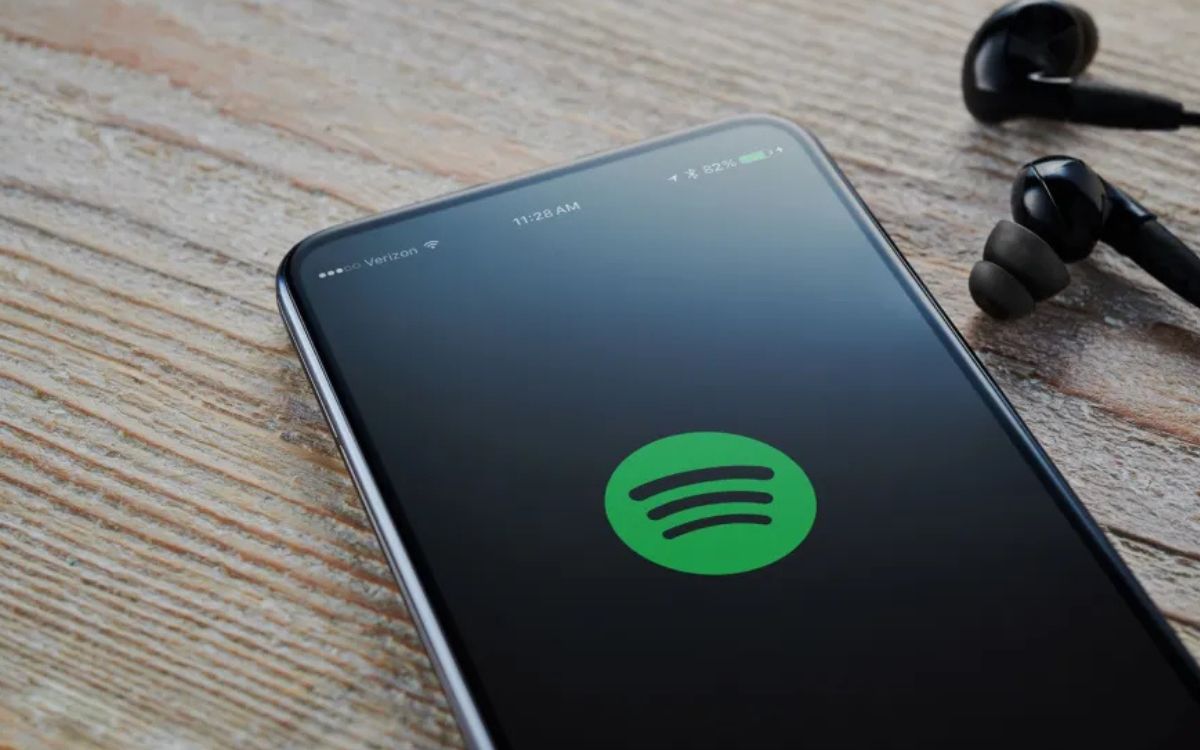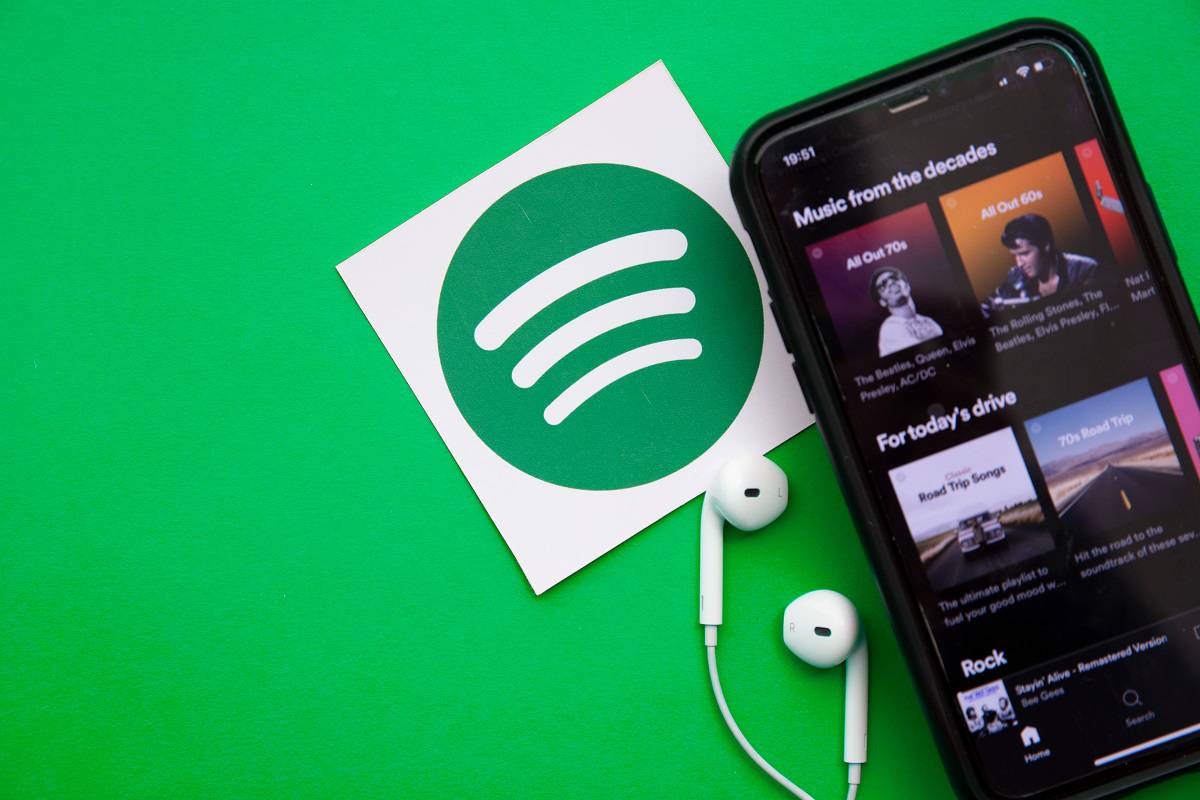Home>Events & Info>Podcast>Can You See Who Listens To Your Podcast On Spotify
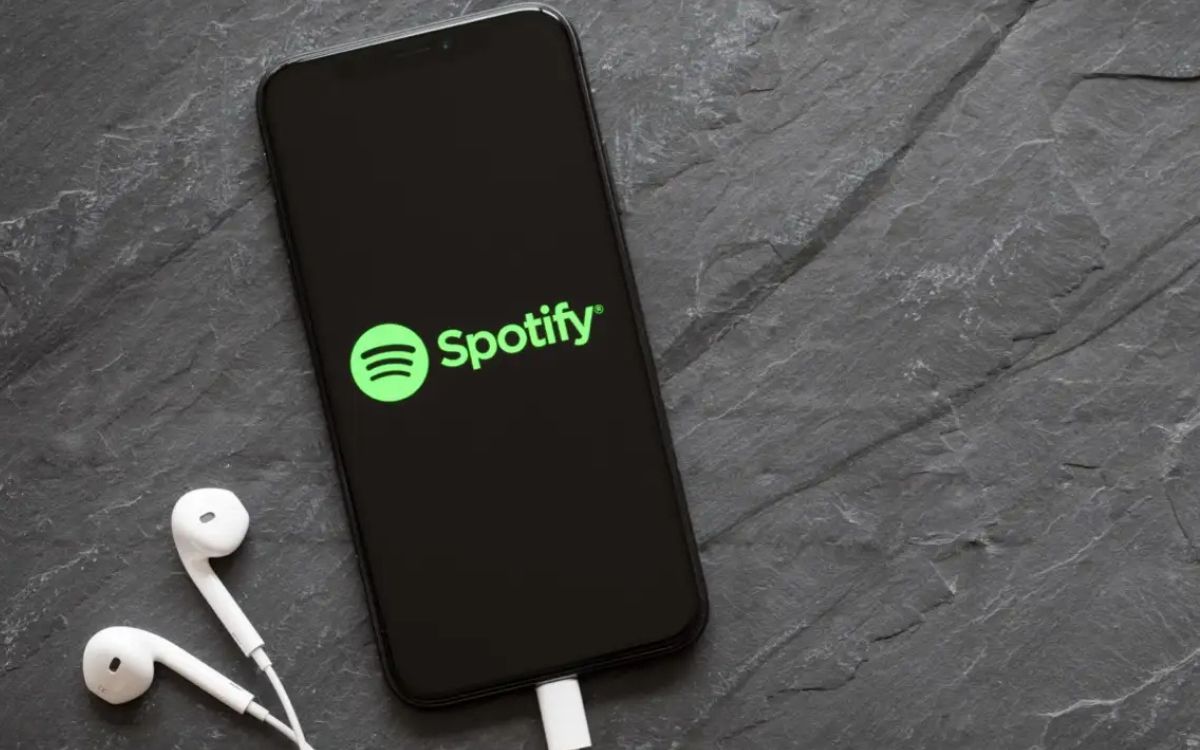

Podcast
Can You See Who Listens To Your Podcast On Spotify
Published: December 14, 2023
Discover who listens to your podcast on Spotify and gain valuable insights about your audience. Analyze your podcast's performance with Spotify's listener data.
(Many of the links in this article redirect to a specific reviewed product. Your purchase of these products through affiliate links helps to generate commission for AudioLover.com, at no extra cost. Learn more)
Table of Contents
Introduction
Podcasting has exploded in popularity in recent years, with millions of listeners tuning in to their favorite shows on platforms like Spotify. As a podcaster, you may find yourself wondering if you can see who exactly is listening to your podcast on Spotify. After all, having access to this information could provide valuable insights into your audience and help you tailor your content to better suit their preferences. In this article, we will explore the topic of podcast listener visibility on Spotify and shed light on what information you can actually obtain.
When it comes to privacy, Spotify takes user data protection seriously. They have implemented strict privacy policies to ensure that listener information remains secure and anonymous. As a result, unless the listener has chosen to engage with you directly, Spotify does not provide individual listener data to podcasters.
However, this doesn’t mean that you’re completely in the dark when it comes to understanding your audience on Spotify. Spotify provides podcast analytics for creators, offering valuable insights into the overall performance of your show and audience engagement. While you may not have access to specific information about individual listeners, Spotify’s analytics still offer valuable data that can help you optimize your podcast strategy.
Let’s delve deeper into the details of what information you can access as a podcaster on Spotify and how to leverage it effectively.
Understanding Spotify’s Privacy Policies
Spotify places a high priority on protecting the privacy of its users. As a result, they have implemented strict privacy policies that govern the collection, use, and sharing of listener data. These policies apply to all users, including podcast listeners on the platform.
One of the key aspects of Spotify’s privacy policies is the requirement for listener consent. Spotify ensures that listeners have control over their data and can choose how it is used. This means that listeners have the option to remain anonymous and keep their listening habits private if they wish.
Furthermore, Spotify anonymizes listener data to protect user privacy. This means that even if podcasters were provided with access to listener data, it would not contain any personally identifiable information. Instead, Spotify provides aggregate data and insights that protect the anonymity of individual listeners.
It is important to note that Spotify’s privacy policies are subject to change. As the platform evolves and new features are introduced, privacy measures may be updated to align with current industry practices and regulations. As a podcaster, it is crucial to stay updated on the latest privacy policies to ensure compliance and understanding of what data you have access to.
By understanding Spotify’s privacy policies, you can be confident in the platform’s commitment to protecting listener privacy. While this means that you may not have direct access to individual listener data, it also ensures that you can build trust with your audience and respect their privacy as they enjoy your podcast on Spotify.
Spotify Analytics for Podcasters
Although Spotify doesn’t provide access to specific listener data, they do offer a robust set of analytics tools for podcasters. These tools give you valuable insights into the overall performance of your podcast and the behavior of your audience on the platform.
The Spotify analytics dashboard provides metrics such as the number of streams, unique listeners, and followers. These metrics give you a sense of the reach and popularity of your podcast among Spotify users. You can see how many people are tuning in to your episodes, which can help you gauge the overall success of your show.
Additionally, Spotify provides information on listener engagement. The analytics dashboard shows you the average consumption and completion rates of your episodes. This data can help you understand how engaged your audience is and whether your content is resonating with them. It can also highlight any areas for improvement in terms of episode length or content format.
Furthermore, Spotify offers insights into listener location and demographic information. While this information is not specific to individual listeners, it can give you a broader understanding of your audience’s geographic distribution and potentially guide your content strategy if you have a target audience in mind.
These analytics tools provide valuable data that can help you make informed decisions about your podcast. By analyzing the metrics and trends, you can identify patterns and adjust your content or marketing strategy accordingly. You can track the impact of promotional efforts, evaluate the success of specific episodes or series, and gain insights into what resonates with your audience.
Although Spotify’s analytics may not provide granular details about individual listeners, they still offer valuable information that can be used to optimize your podcast and better understand your audience.
Accessing Basic Listener Data
While Spotify does not provide access to specific listener data, there are some ways to gather basic information about your podcast audience. One of the simplest ways to do this is by engaging with your listeners directly through various channels.
Encourage your listeners to engage with your podcast by asking them to leave reviews, comments, or ratings on Spotify. Although these interactions are not directly tied to specific listener profiles, they can provide you with valuable insights into their preferences and feedback. Pay attention to the comments and reviews left by your audience as they can offer valuable insights into their demographics, interests, and even suggestions for future episodes.
Additionally, using social media platforms can be an effective way to interact with your audience and gather basic listener data. By creating dedicated social media pages for your podcast and encouraging listeners to follow and engage with your content, you can gain insights into their demographics, interests, and feedback. Tools like Facebook Insights or Twitter Analytics can provide demographic information about your followers, helping you better understand your audience.
It’s important to note that while these methods can provide some general information about your listeners, they are not comprehensive or representative of the entire Spotify audience. However, they can still be valuable in complementing the insights provided by Spotify’s analytics tools.
Remember that listener engagement and interaction go beyond data collection. Building a community around your podcast allows you to foster a deeper connection with your audience and understand their needs and preferences more intuitively.
By actively engaging with your listeners, encouraging their feedback, and leveraging social media platforms, you can gather basic information about your audience and enhance your understanding of their demographics and interests.
Spotify’s Anonymous Listening Data
One of the ways Spotify protects listener privacy is by providing anonymous listening data to podcasters. This data allows you to gain insights into the overall listening behavior of your audience without revealing any personally identifiable information.
Spotify’s anonymous listening data includes metrics such as the number of streams, skip rates, and completion rates for your podcast episodes. While this information does not identify individual listeners, it can still give you a sense of how engaged your audience is and which episodes resonate the most with them.
For example, by analyzing the skip rates, you can determine if certain sections of your episodes are less engaging and make adjustments accordingly. If you notice a particular episode has a higher skip rate, it may indicate that the content is not capturing the interest of your audience, prompting you to consider making improvements or exploring new topics.
Additionally, completion rates can provide insights into the duration of your episodes. If you notice that a significant number of listeners drop off before reaching the end of your episodes, it might be an indication that they are too long or that the content is losing their interest. This information can help you refine your episode lengths and keep your audience more engaged throughout.
By leveraging Spotify’s anonymous listening data, you can make data-driven decisions to improve the quality and appeal of your podcast content. While you may not have access to the individual preferences of your listeners, these overall metrics can guide you in creating a more compelling podcast experience.
It’s important to remember that the anonymous listening data provided by Spotify is only a snapshot of the behavior of your podcast’s audience on the platform. To gain a more comprehensive understanding of your listeners, consider combining this data with other methods of engagement and feedback as mentioned earlier.
By utilizing the anonymous listening data, you can uncover valuable insights that will help you optimize your podcast and tailor it to better suit the preferences and interests of your audience.
Listener Demographics on Spotify
While Spotify does not provide specific demographic information about individual listeners, they do offer some insights into the overall demographics of your podcast audience on the platform. These insights can be helpful in understanding the profile of your listeners and tailoring your content to better resonate with them.
Spotify provides aggregate data on listener location and demographics. This information gives you a general understanding of where your audience is geographically located and can provide insights into their potential cultural backgrounds and interests.
Additionally, Spotify offers some audience insights that can give you a sense of the age and gender distribution of your listeners. By tracking the age and gender breakdown, you can gain a better understanding of the demographics that your podcast is attracting.
While this data is not individually identifiable, it can be valuable in shaping your content strategy. Understanding the age range and gender distribution of your audience can help you create content that is relevant and appealing to your target demographic.
However, it’s important to note that the demographic data provided by Spotify may not be completely representative of your entire podcast audience. The insights are based on the behavior of Spotify users and may not capture listeners who access your podcast through other platforms or apps.
To gain a more comprehensive understanding of your audience demographics, consider utilizing external analytics tools or conducting surveys among your listeners. These methods can provide more specific and detailed demographic information that can further inform your content strategy.
Overall, while Spotify does not provide individual listener demographics, they offer valuable aggregated data that can give you insights into the overall profile of your audience. By leveraging this information in conjunction with other methods, you can gain a better understanding of who your listeners are and tailor your podcast content accordingly.
Using External Analytics Tools
While Spotify’s analytics provide valuable insights into the performance of your podcast on the platform, you may also consider utilizing external analytics tools to gather additional data and gain a deeper understanding of your audience.
External analytics tools offer more comprehensive insights into listener behavior, demographic information, and engagement metrics. These tools can provide you with a more detailed picture of your podcast’s performance across various platforms, including Spotify.
One popular external analytics tool for podcasters is Google Analytics. By integrating Google Analytics with your podcast website or landing page, you can track important metrics such as website traffic, referral sources, and user behavior. This valuable data can help you understand how listeners discover your podcast and how they engage with your website or other online platforms.
Another powerful external analytics tool is Chartable. It allows you to track and measure the performance of your podcast episodes across different platforms, including Spotify. With Chartable, you can gain insights into listener demographics, playback locations, and even track referral sources to understand where your audience is coming from.
In addition to Google Analytics and Chartable, there are a wide range of analytics tools available that offer specific features and capabilities to help you analyze and optimize your podcast. Some tools provide detailed listener demographic data, while others focus on engagement and retention metrics.
Ultimately, choosing the right external analytics tool depends on your specific needs and goals as a podcaster. It’s important to consider the features, data accuracy, and ease of integration when evaluating different tools.
By utilizing external analytics tools in conjunction with Spotify’s analytics, you can gain a more holistic view of your podcast’s performance and audience. These tools provide you with additional insights and data that can help you make informed decisions and optimize your content strategy.
Understanding Listener Privacy on Spotify
Listener privacy is a top priority for Spotify, and they have put measures in place to protect the personal information and listening habits of their users. As a podcaster, it’s important to have a clear understanding of the privacy practices and policies of the platform when it comes to your podcast audience.
One of the key aspects of listener privacy on Spotify is the anonymity of user data. Spotify anonymizes listener data to protect their identity and ensure that no personally identifiable information is shared with podcasters or any other third parties. This means that you, as a podcaster, do not have access to specific information about individual listeners unless they choose to interact with you directly.
Spotify’s privacy policies ensure that listeners have control over their own data. Users have the ability to control their privacy settings and choose whether or not to share their listening activity with others. This means that some listeners may choose to keep their listening habits private, and as a result, you may not have access to specific information about their engagement with your podcast.
It’s important to respect listener privacy on Spotify and to adhere to the platform’s guidelines. Avoid trying to gather or obtain any personally identifiable information about your listeners, as this goes against Spotify’s privacy policies and can lead to negative consequences for your podcast.
That being said, you can still engage with your audience and create a strong community by encouraging interactions through comments, reviews, and social media channels. By fostering open communication and creating a space for listeners to provide feedback, you can create a sense of connection and build trust with your audience.
Understanding listener privacy on Spotify allows you to navigate the platform responsibly and ethically. By respecting the privacy of your listeners and adhering to Spotify’s privacy policies, you can build a loyal and engaged audience while maintaining a positive relationship with the platform.
Conclusion
While you may not have direct access to the specific listener data on Spotify, there are still valuable resources and insights available to help you understand and connect with your podcast audience. Spotify’s analytics tools provide an overview of your podcast’s performance, including metrics such as streams, unique listeners, and engagement rates. These metrics provide valuable insights into the overall popularity and engagement of your podcast.
Furthermore, while specific listener demographics are not provided, Spotify offers aggregate data on listener locations and some audience insights, such as age and gender distribution. These insights can guide your content strategy and help you tailor your episodes to better resonate with your target audience.
Additionally, by leveraging external analytics tools like Google Analytics or Chartable, you can gather more comprehensive data and gain deeper insights into listener behavior, demographics, and engagement across various platforms, including Spotify.
It’s important to respect listener privacy on Spotify and adhere to the platform’s privacy policies. Spotify is committed to protecting the privacy and anonymity of its users, giving them control over their own data and choices regarding their privacy settings.
In conclusion, while you may not be able to see specific listener details on Spotify, the available analytics and aggregate data still allow you to gain valuable insights into your podcast’s performance and audience engagement. By using these insights in conjunction with external analytics tools and fostering a strong and engaged community, you can optimize your podcasting strategy and create content that resonates with your audience on Spotify and beyond.



